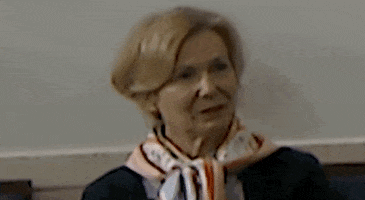.
Restaurants and gyms were spring ‘superspreader’ sites - STAT
Restaurants and gyms were spring ‘superspreader’ sites. Occupancy limits could control Covid, new study predicts
By ELIZABETH c00nEY @c00ney_liz
NOVEMBER 10, 2020
People keeping social distance as they line up in front of a supermarket in the Corona neighborhood of Queens in New York in April.JOHANNES EISELE/AFP VIA GETTY IMAGES
Using cellphone data from 1 in 3 Americans, researchers have identified the indoor public places most responsible for the spread of Covid-19 in the spring, and they argue that sharply limiting the occupancy of these locales — chiefly restaurants, gyms, cafes, hotels, and houses of worship — could control the raging pandemic without resorting to lockdowns.
Their
analysis also explains how disparities in risk contribute to the disproportionate disease burden borne by people of color who have been less able than higher-income white people to work remotely and who tend to visit grocery stores and other places that tend to be smaller and more crowded than those in white neighborhoods.
“It corresponds to what we thought from the beginning, that there are certain activities that lead to spread more than other activities,” said Amesh Adalja, a senior scholar at the Johns Hopkins Center for Health Security who was not involved in the study. “When you are thinking of targeted public health interventions, it’s important to focus on those activities where that’s occurring and not being overly blunt and blocking and stopping all activities that may not necessarily have been a major contributor to spread.”
Mining mobile phone data, scientists tracked 98 million people’s hourly movements from March 1 to May 2 to places they visited regularly, and then mapped their movements to nearly 533,000 locations onto models of infectious disease spread. The simulated transmission rates accurately predicted actual daily case counts in neighborhoods of 10 large metropolitan areas, including Chicago, New York City, and San Francisco. That allowed them to identify which “superspreader” venues pose the greatest risk, which socioeconomic factors matter, and what works to diminish the danger.
“Our results suggest that infection disparities are not the unavoidable consequence of factors that are difficult to address in the short term, like differences in preexisting conditions,” Jure Leskovec of Stanford and co-authors wrote in their
paper published Tuesday in Nature. “On the contrary, short-term policy decisions can substantially affect infection outcomes by altering the overall amount of mobility allowed and the types of [places] reopened.”
In Chicago, for example, 10% of the places people visited accounted for 85% of the predicted infections. Full-service restaurants, fitness centers, and places of worship had the highest overall risk for disease transmission, but that varied depending on the neighborhood. Across the 10 cities, snack bars and cafes were visited more often by people in high-income neighborhoods, but risk of disease transmission was higher in these businesses located in lower-income neighborhoods.
Finding ways to help people stay home could help erase differences in people’s movements based on their income. In the Chicago metro area, overall visits to public places plummeted 54% in March, but in April people living in the lower-income neighborhoods were 27% more likely to travel to public places than people from higher-income neighborhoods. The authors said the gap probably reflects frontline workers holding jobs that could not be performed remotely.
Beyond capping occupancy at grocery stores, the scientists urge policymakers to open emergency food distribution centers. They also advocated for free, widely available testing in high-risk neighborhoods. To improve the lives of people who can’t work from home, they recommend better paid leave policy or income support so people can stay home when they are sick. For essential workers, they encourage better infection prevention in their workplaces, including high-quality PPE, good ventilation, and distancing when possible.
“These findings could have a valuable role in guiding policy decisions on how to reopen society safely and minimize the harm caused by movement restrictions,” Kevin Ma and Marc Lipsitch of the Harvard T. H. Chan School of Public Health wrote in a
commentary published with the study.
Cases and deaths are already climbing, ahead of winter, when the virus
can spread more easily in cold, dry weather that sends people indoors.
“I do think it’s going to be something where we have to get the entire population taking this very seriously, realizing that their behaviors have the most influence on the trajectory of these cases,” Adalja said.
In a teleconference with reporters, co-author Serina Yongchen Chang from Stanford said the researchers have been watching gross trends in Chicago showing that mobility is rising, but while infection rates did jump in the summer, they did not reach earlier pandemic levels from the spring.
“The behaviors that people are doing as they are moving around are having a meaningful impact on transmission: better social distancing, going to different places in different ways,” she said. “All of that is having an impact.”
The next step for the researchers is to make an interactive tool available to local officials navigating trade-offs between health and economic consequences when they consider reopening public places in their neighborhoods, Leskovec said on the call.
“Policymakers should be able to test different types of reopening based on the impact of the mobility on infections over time, as well as the disparities in infections across demographic groups,” he said.


 i read " hasnt been tested on humans" about something today, guess it wasnt this
i read " hasnt been tested on humans" about something today, guess it wasnt this


 job sent us back to working from home
job sent us back to working from home

